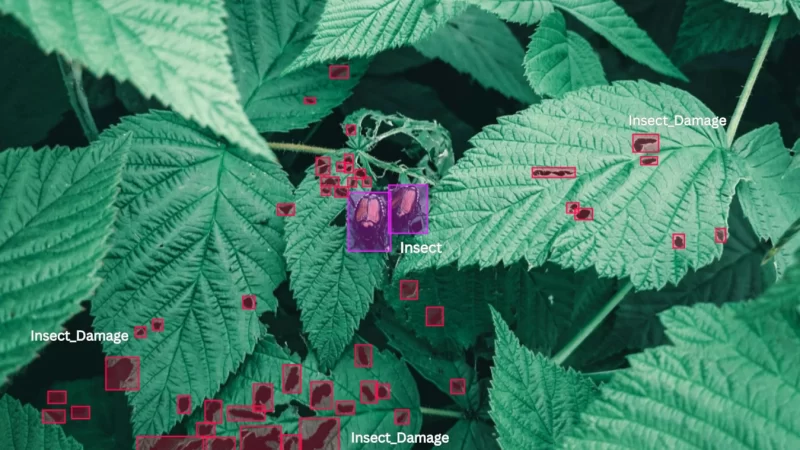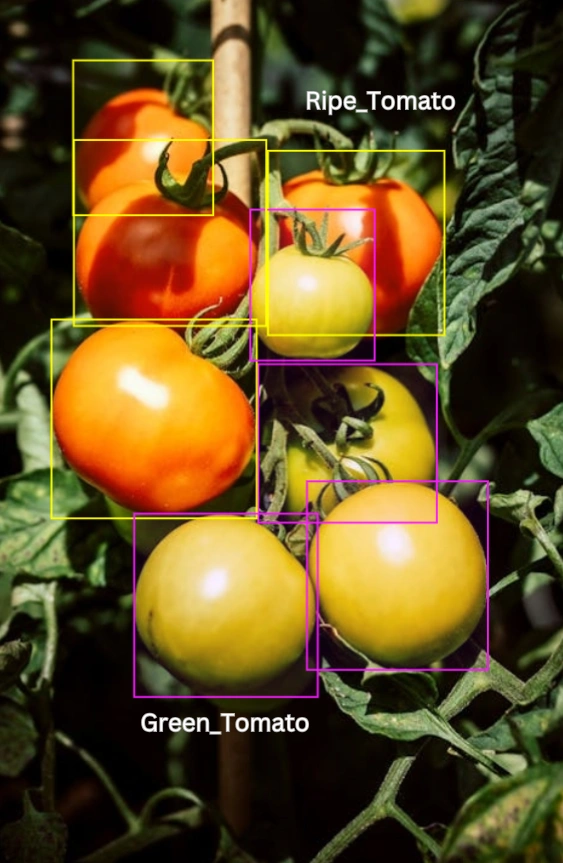Use cases in Agriculture

Detecting Insect Damage and Disease on Leaves
This annotated image showcases how AI-driven image annotation can detect insect infestations and disease symptoms on plant leaves. The system marking affected areas helps farmers identify issues early, enabling timely intervention to protect crop health. Such technology supports sustainable agriculture by reducing pesticide usage and improving yield quality.
Measuring Fruit Ripening Progress
Image annotation is revolutionizing modern agriculture by enabling AI to assess the health, ripeness, and maturity of fruits and vegetables. By analyzing features such as color, texture, and size in real-time, AI ensures optimal harvest timing, reduces waste, and improves overall yield quality. This technology enhances precision agriculture, allowing farmers to allocate resources effectively and deliver higher-quality produce to markets, while promoting sustainable farming practices.
AI in Crop Grading and Sorting
AI-powered image annotation facilitates efficient grading and sorting processes in agriculture by accurately labeling fruits and vegetables based on their condition. Annotated datasets allow AI to differentiate ripeness levels, identify defects, and classify produce, minimizing human error. This innovation improves operational efficiency, reduces costs, and ensures consistent quality, helping farmers maximize profits and meet consumer expectations.

Detecting Lane Alignment of Planted Crops
AI-based image analysis can verify if crops are planted in well-aligned rows, as shown with green lines. This alignment check ensures optimized spacing for sunlight, irrigation, and pest control, promoting healthier growth and easier maintenance. Such monitoring helps farmers maximize land use efficiency and crop yield.
Identifying Agricultural Field Types and Crop Patternss
This annotated aerial image analysis can determine if this is an agricultural field and identify specific crop types based on color and texture patterns. It helps farmers and agronomists understand crop distribution and monitor field conditions more effectively, supporting optimized crop management through targeted resource allocation and yield prediction.

